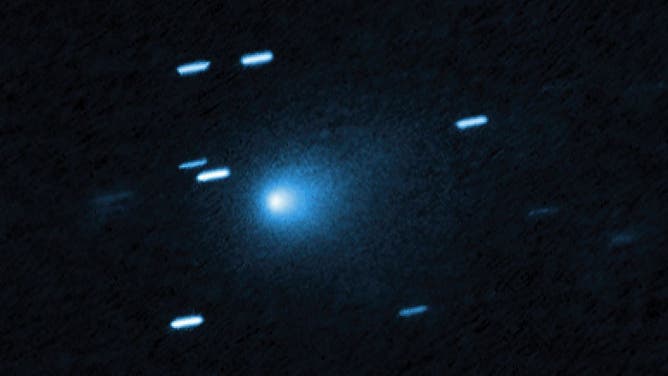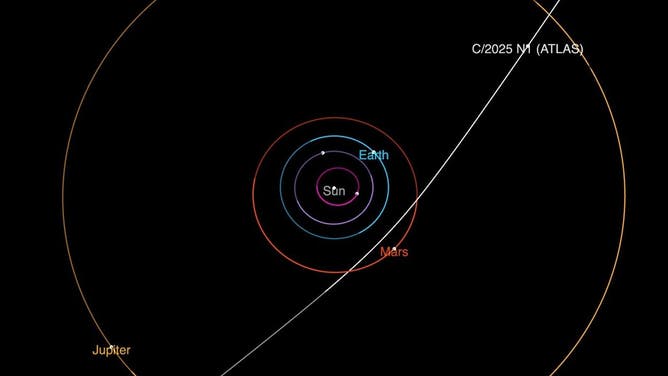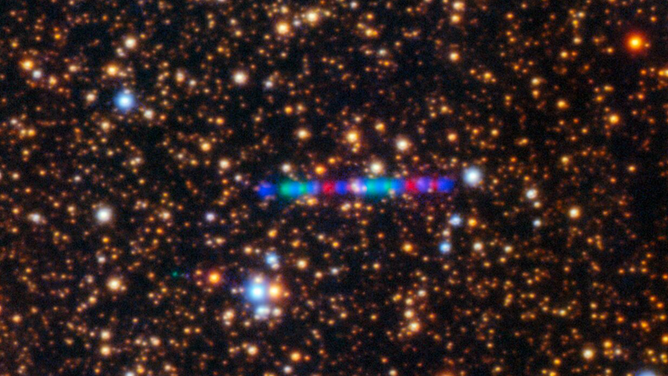NASA's Hubble telescope captures sharpest image yet of interstellar comet racing through solar system
At the time of its unexpected discovery, the comet was about 420 million miles from Earth, near Jupiter, and closing in on what is considered the inner solar system.
NASA astronaut photographs comet shooting by Earth from space station
NASA Astronaut Matthew Dominick recorded this video of Comet Tsuchinshan-ATLAS just above the horizon as the Northern lights danced above Earth. The beautiful video was taken from about 200 miles above Earth from the International Space Station.
KENNEDY SPACE CENTER, Fla. - NASA’s Hubble Space Telescope has captured the most detailed image yet of the interstellar comet 3I/ATLAS, which is thought to have originated well outside the Milky Way.
The comet, first spotted on July 1 by the NASA-funded Asteroid Terrestrial-impact Last Alert System in Chile, is only the third known interstellar object to pass through our solar system.
It was first observed while around 420 million miles away from Earth, near the planet Jupiter, and was estimated to be traveling at a speed of around 130,000 mph.
Despite its extraordinary speed and trajectory, NASA said the comet poses no threat to Earth or the Moon, with the object remaining about 150 million miles away from the planet.

New image of the comet 3I/ATLAS from the Hubble Telescope
(NASA)
SEE THE OBJECTS HUMANS LEFT BEHIND ON THE MOON
While the comet’s solid core cannot yet be directly seen, even through the use of powerful telescopes, high-resolution imagery has allowed scientists to narrow down estimates of its size.
According to astronomers, including David Jewitt from the University of California of Los Angeles, the comet’s nucleus is likely no larger than 3.5 miles wide.
"This is like glimpsing a rifle bullet for a thousandth of a second," Jewitt stated. "You can't project that back with any accuracy to figure out where it started on its path."
In a photo released by the space agency, the comet appears to be teardrop-shaped with plenty of dust coming off its solid, icy nucleus.
The amount of material being shed by the comet is said to be similar to that seen with comets native to our own solar system.
Its rapid forward speed suggests the comet has been journeying through space for billions of years, with its speed accelerated by the gravitational pull of stars, planets and nebulae it has encountered during its journey.
ASTRONOMERS SPOT RARE INTERSTELLAR COMET SPEEDING THROUGH SOLAR SYSTEM
Alongside Hubble, several other high-tech instruments, including the James Webb Space Telescope, TESS (Transiting Exoplanet Survey Satellite) and the Neil Gehrels Swift Observatory, are expected to contribute observations of the comet before it becomes hidden from Earth later this year.
"3I/ATLAS should remain visible to ground-based telescopes through September, after which it will pass too close to the Sun to observe. It is expected to reappear on the other side of the Sun by early December, allowing for renewed observations," NASA previously stated.
The space agency did not say where astronomers believe the comet originated, though most such objects are thought to come from the Kuiper Belt or the Oort Cloud.


